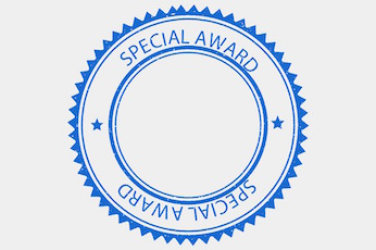
On June 13th, the FCC Chairman's Awards for Advancement in Accessibility were recognized at the M-Enabling Summit in Arlington, Virginia. The awards are a FCC program that recognizes “products, services, standards and other innovative developments that improve the experience of people with disabilities in telecommunications and technology.”
Among this year’s winners are these three fantastic technologies and services for people with vision and hearing limitations:
Wearable Sign Language Recognition System Prototype - Interprets motions and displays text. This is a research project from Texas A&M University. Learn more details from the project at the Dwight Look College of Engineering.
Disney's Movies Anywhere App - Syncs audio description with a movie in progress. The iOS device is used as a second screen to listen to the description of a movie being played on a movie theater, the TV or another device. See this Lighthouse article from earlier this year that also mentions a successful test done at a Pixar event last December.
eSight Eyewear – A headset with video camera to help people with low vision to maximize the use of their residual vision. Seems simple and very effective. Learn how it works.
There were also these three Honorable Mentions:
Convo Announce - Integrates visual emergency and public broadcasting system with video relay service. With this technology, users are able to receive announcements as Picture- In-Picture while in video calls. Convo explains its product more in depth on this press release.
KNFB Reader - App that reads documents using a smartphone camera. It was developed by Kurzweil and the National Federation of the Blind and was also selected as AppleVis Golden Apple Awards winner last December. The AppleVis Golden Award is “awarded by community votes to developers in recognition of excellence in iOS apps.” See the app in action.
Holy Braille Project - Researches solutions for low-cost Braille display tablets. This is an ongoing research project from the University of Michigan working on a prototype of low cost Braille tablets that function using hydraulics rather than electronics to reduce the device’s cost. Professor Sile O’Modhrain and graduate student and research assistant Alexander Russomanno explain what they are working on in this video.
Congratulation to all the winners!
Sources:
- Federal Communications Commission
- Texas A&M University
- LightHouse for the Blind and Visually Impaired
- eSight Corporation
- Convo Communications
- National Federation of the Blind
- AppleVis
- University of Michigan













